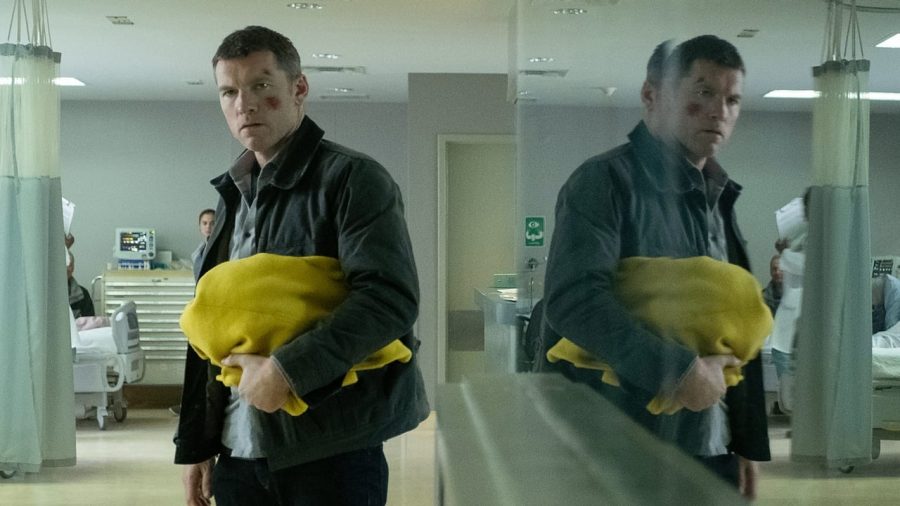‘Fractured’: A psychological thriller with an ineffective plot twist
Sam Worthington plays a father who seeks to uncover the truth after his daughter and wife go missing.
In Netflix’s latest thriller, “Fractured,” a father desperately searches for his wife and daughter after they disappear from a hospital — with no record of them ever being there.
The father, named Ray Monroe (played by Sam Worthington) checks in his 6-year-old daughter Peri (Lucy Capri) at a hospital after she falls and injures her arm. After a long wait to be seen, Peri and her mother Joanne (Lily Rabe) are taken to a different floor of the hospital for Peri to get a CAT scan. Hours go by, and they’re nowhere to be seen.
With a foreshadowing scene moments before the accident where Joanne bluntly states to Ray, “You don’t fight for anything anymore,” Ray starts his redeeming fight for justice. He ventures to find his family and expose what could be a scandal against the hospital. Many suspenseful moments ensue, and it becomes difficult to discern the truth.
While “Fractured,” directed by Brad Anderson (“Session 9” and “The Machinist”), has its suspenseful moments that engage viewers, the ending was shabby. A large twist comes into play that’s quite jarring, to say the least.
At its most suspenseful points, I was convinced that the standoffish hospital staff was hiding something and rooted for Ray to seek vengeful justice and find his family. Those moments make the film shine in the area of audience immersion and emotional appeal — the best traits it has.
Also included in the film’s “fact or fiction” dilemma is the obvious foreshadowing. Aspects of scenes are shown multiple times — emphasized to the extreme — for viewers to question the hospital’s involvement in Peri and Joanne’s disappearance, such as a “get well” balloon at the accident scene and the attention focused on Ray’s forehead injury.
What’s shown in the film leads viewers to make a certain conclusion about the incident, but when expectations get flipped on their head, the ending doesn’t quite have the justification it needs to be successful.
The hospital’s practices don’t add up because standard hospitals would not let a missing persons claim go as far as it does in the film. Hospitals certainly would get further law enforcement than hospital security involved as soon as a situation becomes serious.
The behavior of hospital staff members also throws off the plot progression. Hospital members are repeatedly dismissive of Ray, and their overall awkwardness in mannerisms makes some confusing moments — and heightens viewer frustration both about the situation and for Ray’s sake.
However, since the film focuses on Ray, who’s a former alcoholic and experiences occasional blackouts, it’s difficult to tell how reliable of a narrator he is — and Worthington’s ever-intense demeanor as Ray doesn’t help.
The juxtaposition between Ray as a rational father and an unreliable character could be seen as a negative trait if someone is looking to unravel “Fractured’s” plot points, but a positive when considering the effectiveness of the narrative itself.
With its odd moments but pretty well-done suspenseful scenes, “Fractured” is a psychological thriller that has the potential to instill fears of corrupt healthcare systems into its viewers — or was that fear already well-established beforehand?
Rating: 3/5 stars








Elle • Oct 22, 2019 at 8:16 PM
I thought it was pretty cool. I watch a lot of really weird movies on Netflix, and I thought this was one of the better low budget weird dark movies. I thought the creepy staff, his unreliable narrative, the dank old hospital all just, well, worked. There are a lot worse movies on Netflix . Into the Forest, to name one.